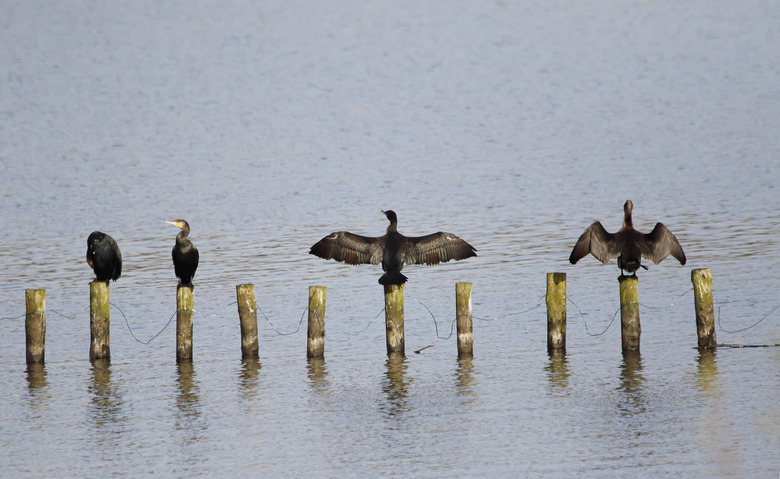Information On The Cormorant Bird
The cormorant is a family of birds that live near the shores of lakes and oceans all over the word, except for the central islands of the Pacific. This fishing bird does not have natural oil in its feathers such as other seabirds and must spend most of its time drying its wings. The cormorant is usually found such as docks and downed trees for sunning and nesting.
Characteristics
Characteristics
Cormorants are generally considered between medium and large birds but can range in size from 18 inches (Pygmy Cormorant) to 40 inches (Flightless Cormorant). Most cormorants have dark feathers, but a few species that live below the Equator can be black and white. All cormorants have narrow, long and hooked bills. The skin on the face can vary in color from blue to red to orange.
Diet
Diet
All cormorants feed on marine life. This diet mainly consists of fish and eels, but some cormorants will even eat snakes at times. Cormorants dive under the water to find food. They use their feet to give themselves momentum and some species of cormorant can dive to 145 feet below the water. In China and other Asian countries, fisherman tie cormorants to boats and use them to get fish out of the water. A knot is tied near the bird's throat so it cannot swallow big fish. This method used to be more common in previous centuries.
Breeding
Breeding
Many species of cormorant change colors during breeding season. For example, Brandt's Cormorant grows white plumage about the head and gets color on its throat. Immediately after eggs are laid, the cormorant will return to its dull colors. Eggs are typically laid in early spring and chicks hatch in early summer. Breeding is different throughout the world for the cormorant as it's tied into local weather and prey population. The chicks are born without feathers and it will take 6 six for plumage to grow in.
Famous Ties
Famous Ties
The cormorant has featured prominently in many famous works of literature. In Paradise Lost, John Milton used the cormorant as a symbol of avarice and dishonesty as it sat in the Tree of Life as Eve entered Eden. In Jane Eyre by Charlotte Bronte, the eponymous heroine painted a cormorant to represent a cruel woman she disliked. During medieval times, many cultures used cormorant plumage in their coat-of-arms and other heraldry.
Evolution
Evolution
It is thought that the cormorants have been already since the time of the dinosaurs. The Gansus yumenensis, the earliest modern bird, shared many characteristics with the cormorant. The exact evolution of the cormorant is unknown but it is thought they come from somewhere around the Indian Ocean. Its closest relatives are the darters, boobies and gannets. Some fossils from the Late Cretaceous period are believed to be from the cormorant family.
References
Cite This Article
MLA
, David Harris. "Information On The Cormorant Bird" sciencing.com, https://www.sciencing.com/information-cormorant-bird-5043201/. 22 November 2019.
APA
, David Harris. (2019, November 22). Information On The Cormorant Bird. sciencing.com. Retrieved from https://www.sciencing.com/information-cormorant-bird-5043201/
Chicago
, David Harris. Information On The Cormorant Bird last modified March 24, 2022. https://www.sciencing.com/information-cormorant-bird-5043201/
